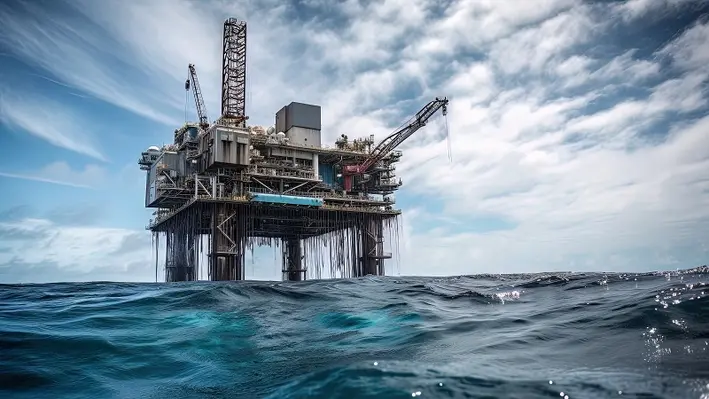

Plexus Holdings PLC, an AIM quoted oil and gas engineering service business, has announced a rental contract award for Exact Adjustable Wellhead and Centric Mudline Suspension Equipment with Neptune Energy UK.
The contract is for Adjustable Surface Wellhead equipment and Mudline Tooling to allow for the permanent abandonment of a UK North Sea well, with operations planned to commence during Q2 2024.
Plexus’ CEO, Ben Van Bilderbeek, commented, “The number of wells that must be permanently plugged and abandoned is fast growing, particularly in mature offshore locations such as the North Sea. We are therefore delighted that Plexus’ reputation is strengthening within this sector, and that our range of customers is broadening.
“Furthermore this contract continues our progress back into Adjustable Wellhead and Mudline equipment market as an expert in this field and ‘go-to’ company for this type of equipment.”
The contract is valued in excess of £175,000 and is an example of the growing rental wellhead market for jackup rigs engaged in plug and abandonment operations.

 Aberdeen-based industrial data and engineering consultancy, Imrandd, has reported its most significant six-month growth period.
Aberdeen-based industrial data and engineering consultancy, Imrandd, has reported its most significant six-month growth period.
The firm has secured a record UK£2mn in topsides asset integrity awards with new and existing clients, amplifying its agile data-driven intelligence services further across the UK.
The firm has won 11 contracts indicating a 27% increase in revenue in Q3 of 2023 compared to the same period last year. As a result, 13 data scientists and multi-discipline engineers have been recruited, ramping up its headcount to 63.
Established in 2015, the company specialises in industrial data solutions helping clients in energy and other sectors to make fast and efficient business decisions in line with commercial and ESG strategies.
The new North Sea campaigns include extracting data from six of Ithaca Energy’s offshore installations, a one-year integrity management contract extension with long-term client Dana Petroleum; a 12-month pipework/ vessel risk-based assessment, and technical integrity scope for Harbour Energy; plus assessing the integrity of the Excalibur Floating Production Storage and Offloading facility for first-time client Ping UK, using Imrandd’s unique data gathering and analysis capability in collaboration with digital asset management specialist, GDi Ltd.
Imrandd founder and CEO Innes Auchterlonie, said, “This record period of growth demonstrates the competitive edge our data solutions and expert engineering guidance is delivering. Particularly where there are facilities operating beyond their original life span, companies are seeking fast, optimal answers to harness their assets’ performance safely and sustainably.
“R&D remains core to our strategy, and we continually reinvest 20% of our efforts into evolving the next generation of our propriety AI and digital software services to help our clients stay ahead of the curve. This has ensured we are well positioned to leverage our expertise to safeguard the effectiveness of our clients offshore and onshore assets as they navigate the energy transition.”
A range of Imrandd’s suite of digital solutions will be utilised across the new campaigns. These include EXTRACT, which digitises legacy asset information and EXACT, which maps and predicts engineering, inspection and maintenance activities to deliver actionable insights which have proven to reduce Opex costs.
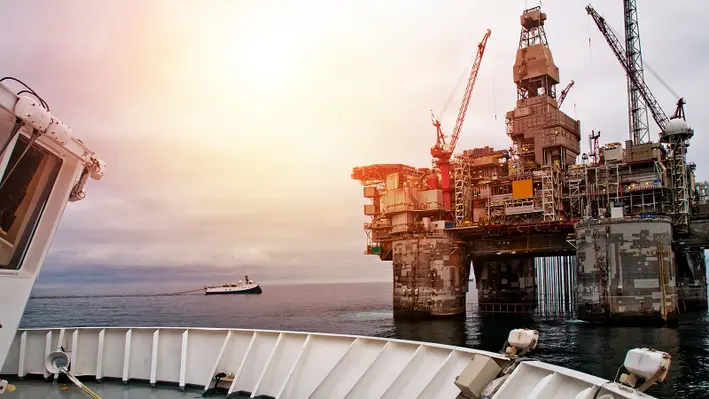
 Energy services provider Expro has completed a well cement placement project for a prominent operator from the US, Gulf of Mexico, delivering an inner-string cementing on a subsea well's 22" surface casing in a water depth of approximately 2,000 m in the Mississippi Canyon area
Energy services provider Expro has completed a well cement placement project for a prominent operator from the US, Gulf of Mexico, delivering an inner-string cementing on a subsea well's 22" surface casing in a water depth of approximately 2,000 m in the Mississippi Canyon area
When integrated with Expro’s other well construction technologies, the company’s innovative Cure technology range, including SeaCure, QuikCure, and CoreCure, offers a comprehensive package for ultimate cement placement and provides a complete 'head-to-shoe' solution.
Expro's Cure technologies allowed the operator to overcome ongoing offset well challenges. These included prolonged wait on cement (WOC) periods when transitioning directly from the jet string to the 22" surface casing, and tasks associated with drilling out a 22" shoetrack.
Jeremy Angelle, Expro’s Vice President of Well Construction, commented, “Our integrated cementing solution helped save approximately 18 hours of cement related drill-out, clean-out, and WOC time when compared to offset wells. By using our Cure technologies, we removed the requirement for a shoetrack to be left in the casing string, helping to avoid previously experienced cement sheath-related challenges. In addition, the QuickCure solution reduced WOC time. This latest project highlights Expro’s commitment to provide solutions that empower our clients to overcome operational challenges and achieve excellent results.”
The Cure technology range was added to Expro’s portfolio of cost-effective, innovative solutions within the company’s well construction product line as part of the Company’s acquisition of DeltaTek in February. The DeltaTek range of low-risk open water cementing solutions help increases clients’ operational efficiency, delivers rig time and cost savings, and improves the quality of cementing operations.


Amplus Energy, a provider of economically-viable global field development solutions, has marked its entry into carbon capture with a significant investment into Carbon Circle AS of Norway and support the establishment of Carbon Circle UK in Aberdeen, UK.
Amplus Energy General Manager, Steve Gardyne, will lead Carbon Circle UK, supported by a team of carbon capture specialists from Norway. Further senior Carbon Circle UK personnel are currently being recruited.
The company has made the multi-million-pound investment in light of the emerging carbon capture market in the UK and how this is impacting the UK Government’s net-zero ambitions. Carbon Circle UK is currently working on front end engineering and design (FEED) studies for the decarbonisation of two major industrial sites in the UK. These projects will have a positive impact on the UK Government’s net zero ambitions.
Amplus Managing Director, Ian Herd, remarked, “We are excited by this opportunity to participate within the Energy Transition in the UK through bringing our client focused, innovative approach to project delivery coupled with the ‘best-in-class’ domain knowledge and significant EPC experience already assembled within Carbon Circle. The creation of Carbon Circle UK brings a new, innovative Carbon Capture EPC partner into a UK market with huge potential.”
Aslak Hjelde, CEO of Carbon Circle, added, “We are excited by our partnership with Amplus Energy, a collaboration set to enhance the growth and innovation of the carbon capture sector in the UK. The UK Government’s significant commitment of UK£20bn to Carbon Capture and Storage is a testament to the strategic importance of CCS technologies in achieving national net-zero ambitions. With the support and expertise of Amplus Energy, Carbon Circle is ready to be a major contributor in the UK’s carbon capture sector."

 Well decommissioning specialist, Well-Safe Solutions, has signed an agreement with Spirit Energy to add a well from the Appleton field to the existing scope of the Well-Safe Defender rig.
Well decommissioning specialist, Well-Safe Solutions, has signed an agreement with Spirit Energy to add a well from the Appleton field to the existing scope of the Well-Safe Defender rig.
This project will add approximately one month of work to the Well-Safe Defender, which mobilised in March 2023 to plug and abandon 14 wells on the UK continental shelf for Spirit Energy.
Chris Hay, Director of Strategy and Commercial at Well-Safe Solutions, said, “From the earliest days of Well-Safe Solutions over six years ago, we have fostered collaborative working throughout the industry to realise safe, smart and efficient well decommissioning operations.
“Spirit Energy’s decision to grant Well-Safe Solutions this contract extension is an endorsement of the excellent performance of the Well-Safe Defender and its crew. We are proud to continue our relationship with Spirit Energy and look forward to continuing our world-class decommissioning operations later this year.”
Head of Wells for Spirit Energy, Nicky Riley, commented, “Well-Safe’s continued strong performance has allowed us to collaborate further with the team - accelerating the decommissioning of the Appleton well, aligning us further with our strategic pillar of meeting and de-risking our decommissioning operations.”

 Subterra Renewables, one of the leading geothermal utility providers in North America, has announced its expansion into Western Canada and the US following its affiliate companies’ recent acquisition of Earth Drilling Co. Ltd.
Subterra Renewables, one of the leading geothermal utility providers in North America, has announced its expansion into Western Canada and the US following its affiliate companies’ recent acquisition of Earth Drilling Co. Ltd.
One of the west coast’s leading drilling suppliers, the transaction includes the acquisition of Nevada-based Harris Exploration, a high-profile source of drilling and installation services in Nevada, California and Arizona. Earth Drilling and Harris are now part of Subterra’s group of companies that provide coast-to-coast access to geothermal drilling for geo-exchange system installations.
Matthew Tokarik, President of Subterra Renewables, said, “We are thrilled to officially welcome our valued collegaues from Earth Drilling and Harris Explorations to our growing network of experienced talent as we scale up our operations and ramp-up assets to meet the rapidly growing demand for community developments powered by renewable energy.
“Aligning ourselves with seasoned leaders that bring a combined 115 years of geo-drilling and exploration experience across North America provides is with immediate access to best-in-class services as we build out our coast-to-coast business. An opportune time as electrification and renewables take their place in a net-zero world.”
John Paul Wegleitner, CEO of Earth Drilling, commented, “We are excited and proud to be combining our visionary teams and resources as we diversify our geo-drilling operational opportunities to support a rapidly growing renewables industry under the Subterra group of companies.”
Subterra Renewables’ Chief Revenue Officer, Kareem Mirza, concluded, “This is a strategic move to ensure our renewable energy sector’s supply chain is adequately equipped with nation-wide access to expeditious and precision-tested talent and services. We are establishing ourselves as a vertically integrated geothermal utility provider whose reach spans across North America – best suited to meet the fast-growing renewable energy movement as district communities transition to electrification, powered by geothermal exchange systems.”
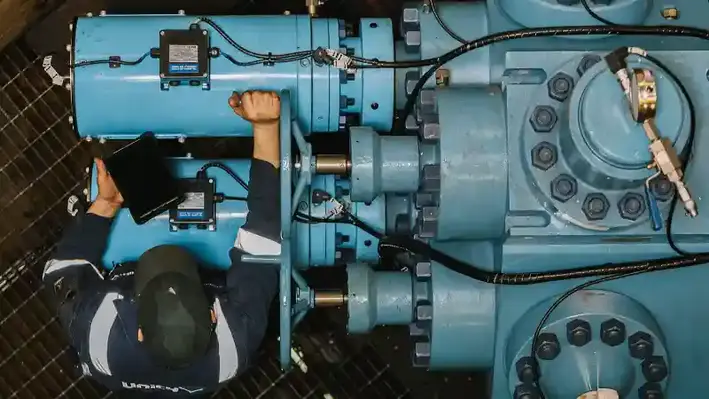
 Unity, Europe’s largest provider of well integrity solutions, has launched a new Wellhead Integrity Verification Programme for operators and integrated service providers who are beginning to plan their well abandonment operations.
Unity, Europe’s largest provider of well integrity solutions, has launched a new Wellhead Integrity Verification Programme for operators and integrated service providers who are beginning to plan their well abandonment operations.
The programme contains a package of technical support, products and innovative technologies to deliver an inspection, maintenance, repair and assurance service to verify that the wellhead and Xmas Tree equipment is in good condition and fully prepared for operations.
The integrity verification provides a complete check of the Xmas Tree, wellhead and near-surface well equipment and delivers value by reducing risk, cost, downtime and man hours while improving safety and efficiency. It aligns with the industry’s preparatory ‘Phase 0’ stage of plug and abandonment and is a critical stage intended to prevent the significant costs associated with unplanned downtime due to equipment failure after rig-based operations have commenced.
Unity’s Technical Sales Director, Stuart Slater, commented, “Working closely with operators over the life of their wells and through the decommissioning process, we have seen an escalating need for good integrity planning before embarking on P&A operations. Already attracting a high cost burden, operators are looking to mitigate additional risk, expense and downtime caused by unexpected surface equipment failures.
“Awareness among our clients of the need to include a full wellhead integrity review in their pre-abandonment planning is increasing and we are ideally placed to work in partnership with the wider industry to deliver this specialist service.”

 Federal economic development agency, Pacific Economic Development Canada (PacifiCan), announced last week that it would provide CAD$3.6mn in funding to Kitselas Geothermal harness geothermal energy in British Columbia for commercial use.
Federal economic development agency, Pacific Economic Development Canada (PacifiCan), announced last week that it would provide CAD$3.6mn in funding to Kitselas Geothermal harness geothermal energy in British Columbia for commercial use.
Kitselas Geothermal aims to decarbonise local industry to provide social, environmental and economic benefits to the traditional territory of Kitselas First Nation. In the first phase of its geothermal project, the ‘Fuel of Recognition’ at the M’Deek Reservoir, it is designed to replace 270,000 gigajoules per year of natural gas, reducing greenhouse gas emissions by more than 13,000 tonnes per year.
With the funding from PacifiCan’s Jobs and Growth Fund, Kitselas Geothermal will drill production wells to harness geothermal energy, with the project expecting to generate 170 jobs for Indigenous workers and furthering the economic benefits for the region. This funding will help Indigenous communities across British Columbia seize new opportunities that power a net-zero future.
The Honourable Harjit S. Sajjan, Minister of Emergency Preparedness and Minister responsible for PacifiCan, said, “This announcement on World Geothermal Energy Day reflects the Government of Canada’s commitment to building a net-zero future. By harnessing the power of geothermal energy in Northern B.C., Kitselas Geothermal brings us one step closer to that future. PacifiCan will continue working with Indigenous communities in B.C. to create lasting economic development that advances reconciliation.”
Alison Thompson, Director of Kitselas Geothermal, added, “Development of the ‘Fuel for Reconciliation’ geothermal energy project is a significant step towards Kitselas First Nation’s economic independence. The project also contributes to B.C.’s and Canada’s transition towards clean energy by demonstrating technology, training highly qualified professionals, and providing a proving ground for regulatory reform that will benefit both future project phases and other geothermal projects elsewhere in the country.”


Plexus, an oil and gas engineering services business which is focused on establishing its patented leak-proof POS-GRIP wellhead and associated equipment, has been awarded a contract for Exact and Centric equipment for a North Sea plug and abandonment (P&A) project.
The company is securing a reputation for its safety, time and cost saving capabilities and is an exclusive licensee to SLB for its range of EXACT Adjustable Wellhead and CENTRIC Mudline systems. The new contact for a leading North Sea operation has been secured through SLB, with the work taking place in Q4 2023.
It will utilise EXACT and CENTRIC equipment and will generate equipment rental revenues in the region of UK£100,000 for Plexus. The collaborative project has been described as a ‘milestone’ by the company, building on the ongoing relationship between the two company. The company also hopes it will firm its reputation in the field of adjustable wellhead and mudline technology.
“Our continued growth into the expanding P&A market is highly encouraging particularly as this project utilises the EXACT and CENTRIC technology specifically designed to provide the safest and quickest tieback and drilling solutions for not only these types of P&A wells, but also exploration and appraisal wells,” commented Plexus' CEO Ben Van Bilderbeek.
"The contract is also an excellent example of the continued collaboration between SLB and Plexus where we believe that SLB recognises Plexus capabilities in Adjustable Wellhead and Mudline projects. We are confident that further opportunities for similar work will arise in the future."


Petroac, a leading energy services company, has celebrated the awarding of a significant deal with Saipem to support the decommissioning of a platform offshore the United Kingdom.
Under the terms of the multi-million-pound contract, the companies will work as an integrated team to remove the 20,000 tonne topside using the Saipem 7000, a large semi-submersible heavy lifting vessel.
Nick Shorten, COO of Petrofac’s Asset Solutions business, remarked, “As our sector pursues cleaner sources of energy, decommissioning is a key enabler for the transition. Supporting Saipem and their customer, we look forward to leveraging our knowledge of North Sea operations and service provision, and 20 years of decommissioning experience to deliver a safe and predictable programme that can serve as a case study for the North Sea’s transition.”
Petrofac will execute the three-year project over two phases. The first will include preparations onboard the platform, the second will be on the Sapiem 7000 for the removal campaign. The scope of Petrofac’s contract includes the module separation, lift point inspection, lift point installation, riser and caisson severing.
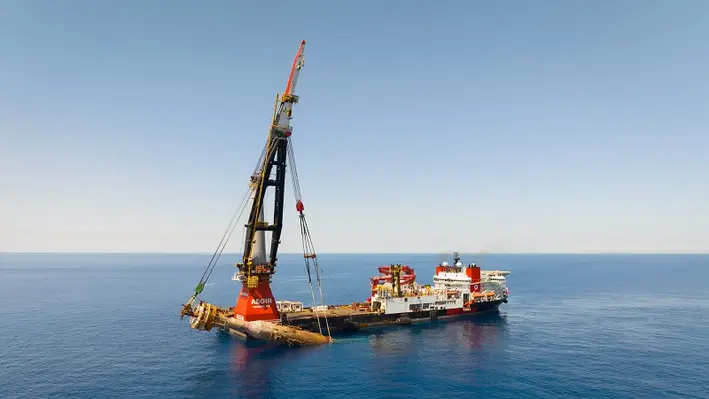

Woodside Energy, an Australian petroleum exploration and production company, has safely and successfully lifted the 83 m-long Nganhurra Riser Turret Mooring (RTM) onto a barge off the North West Cape in Western Australia.
Following the successful lift, the RTM is now transitioning to the Australian Marine Complex (AMC) near Perth. Upon arrival, it will be cleaned and deconstructed for recycling and reuse – more than 95% of the RTM is expected to be eligible for this.
In a world-first, the heavy lift vessel Heerema Aegir, with three supporting tugs, lifted the 2,500 tonne RTM onto a 120 m barge where it was secured ahead of its journey to the AMC. Woodside has presented the removal as a demonstration of its abilities to manage activities in the sensitive marine environments where it operates.
The Nganhurra RTM brought subsea production lines from the Enfield oil field to a floating production storage and offloading facility. Enfield ceased production in November 2018 and the RTM is being removed as part of decommissioning activities at the field, which also includes the permanent plugging and abandonment of 18 former production wells.
The decommissioning concept for the Nganhurra RTM was matured over more than two years of careful planning and detailed engineering, undertaken in conjunction with a range of specialist contractors.
In-field preparatory activities included remote operated vehicle inspections, removal of redundant equipment and installation of a purpose-built lifting point.
Following an assessment of the forecast weather and sea-state, the remaining mooring lines were cut, and the RTM was towed to a sheltered location to ensure the lifting operation could be executed safely. After the RTM is unloaded at AMC, it will be cleaned of marine growth and deconstructed for recycling and reuse opportunities, supporting local employment and contracting opportunities.

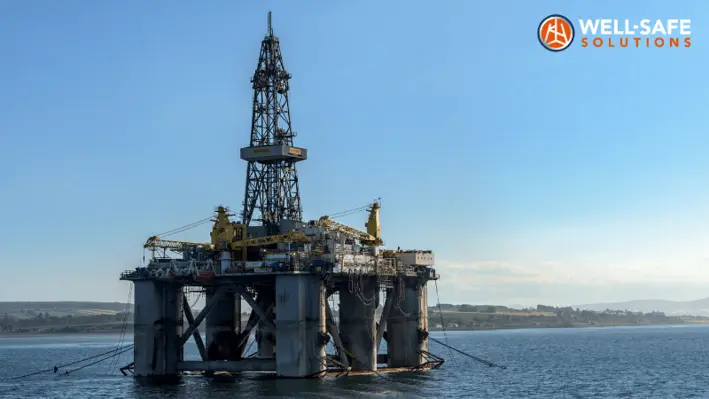
 Well-Safe Solutions has appointed Alexa Duncan as the company’s first Energy Transition Manager as it looks to add carbon capture and storage (CCUS) and geothermal project capabilities to its offering.
Well-Safe Solutions has appointed Alexa Duncan as the company’s first Energy Transition Manager as it looks to add carbon capture and storage (CCUS) and geothermal project capabilities to its offering.
Duncan has more than a decade and a half of experience under her belt in project management and well engineering for international operators, and will play a pivotal role in the delivery of these energy transition business streams.
Duncan said, “Well-Safe Solutions is at the forefront of the well plug and abandonment industry and working closely with clients to reduce their carbon footprint. With the North Sea Transition Authority (NSTA) estimating CO2 storage capacity of 78 billion tonnes on the UK continental shelf alone, there is a clear opportunity for Well-Safe Solutions to apply its considerable expertise when assisting our clients on the journey to net zero carbon emission.
“In addition, extensive growth is also predicted within the geothermal market. I’m passionate about the energy transition and very much looking forward to collaborating with our highly experienced well engineering and subsurface teams on upcoming projects internationally.”
James Richards, Well Abandonment Director at Well-Safe Solutions, added, “Recruiting a professional of Alexa’s calibre to our team is a clear endorsement of our ambition n in this sector. Our own market research and client feedback indicates an opportunity for us to apply the lessons and collaborative working practices we deliver in well plug and abandonment to these fields.”
Page 56 of 111